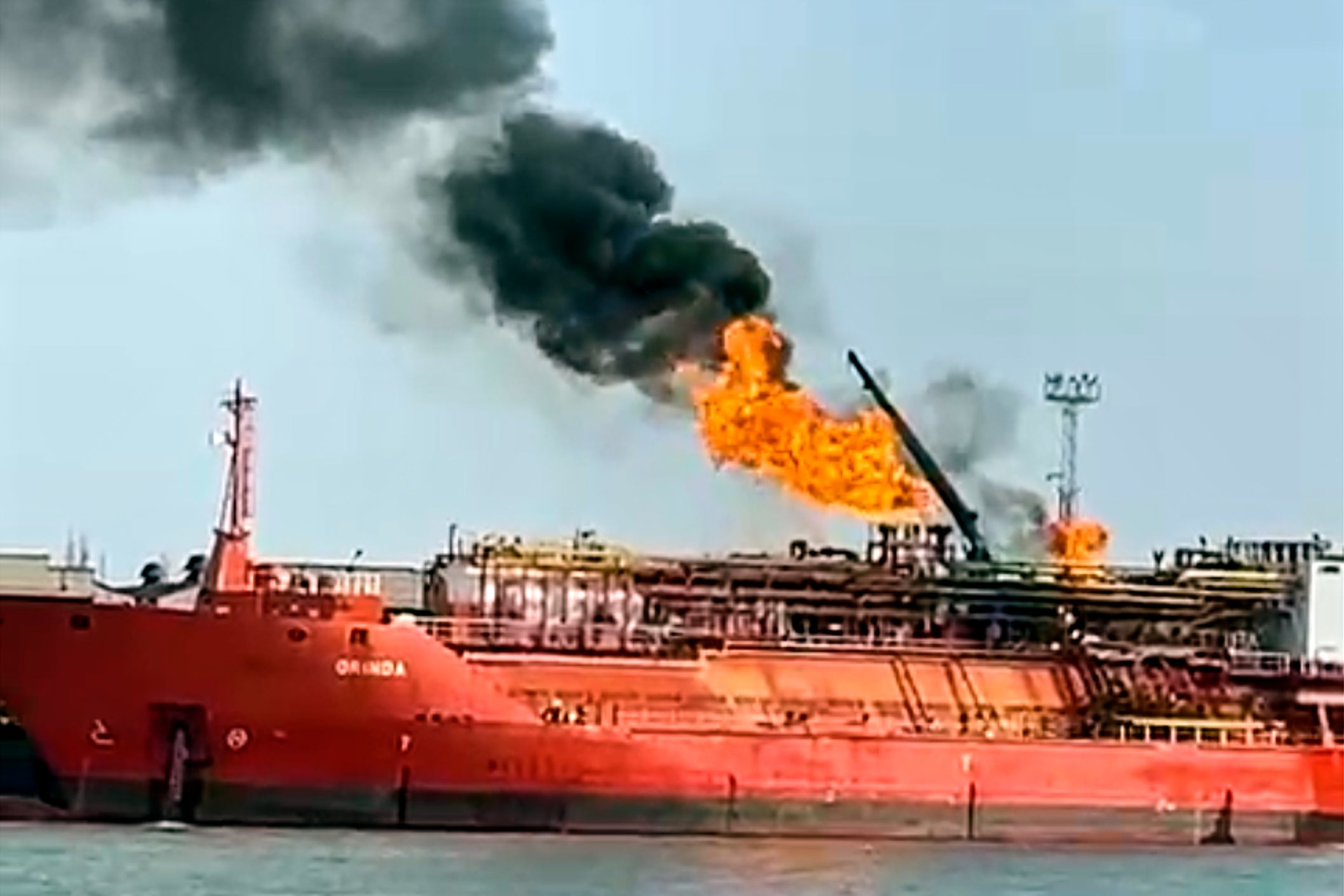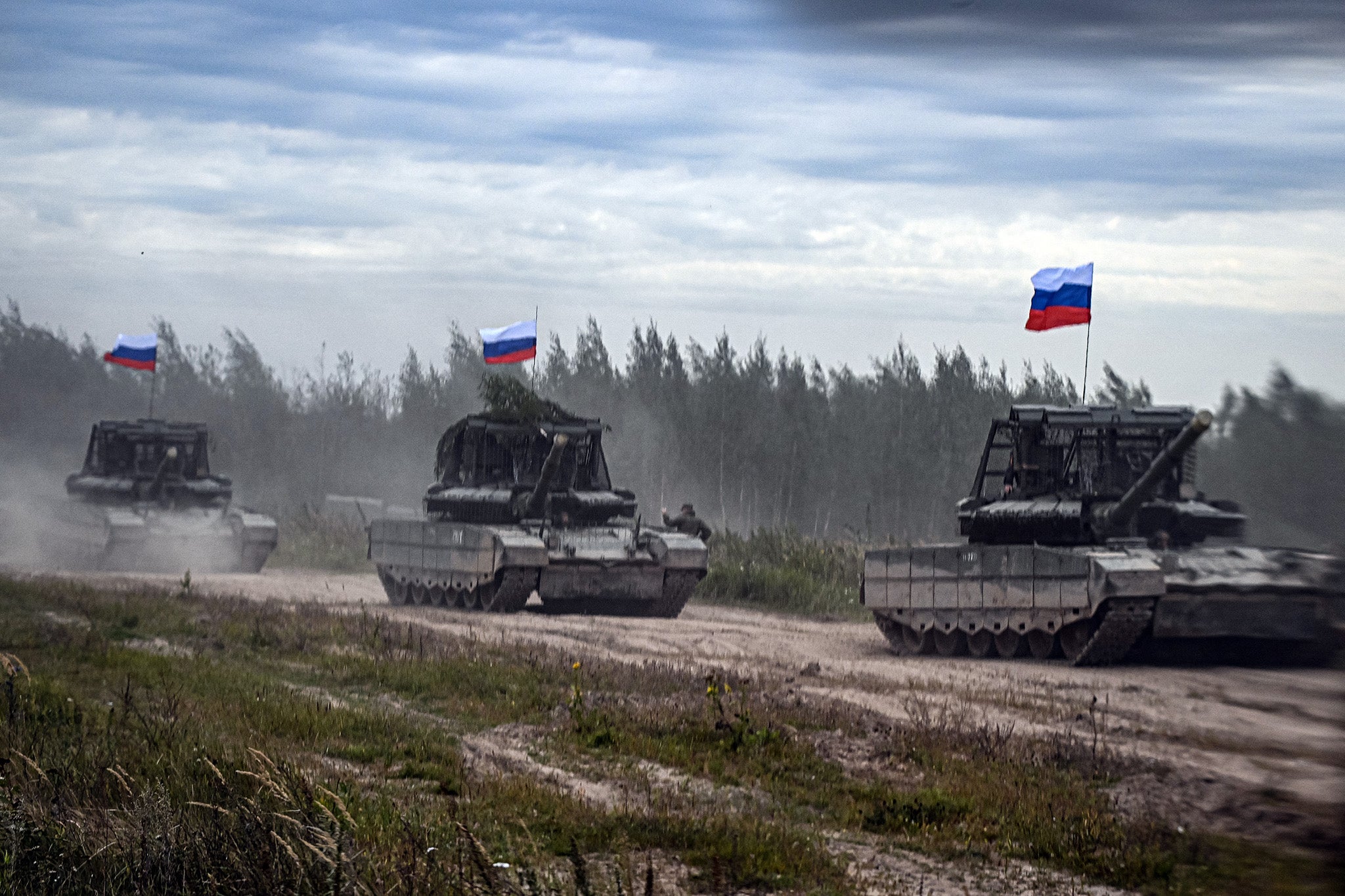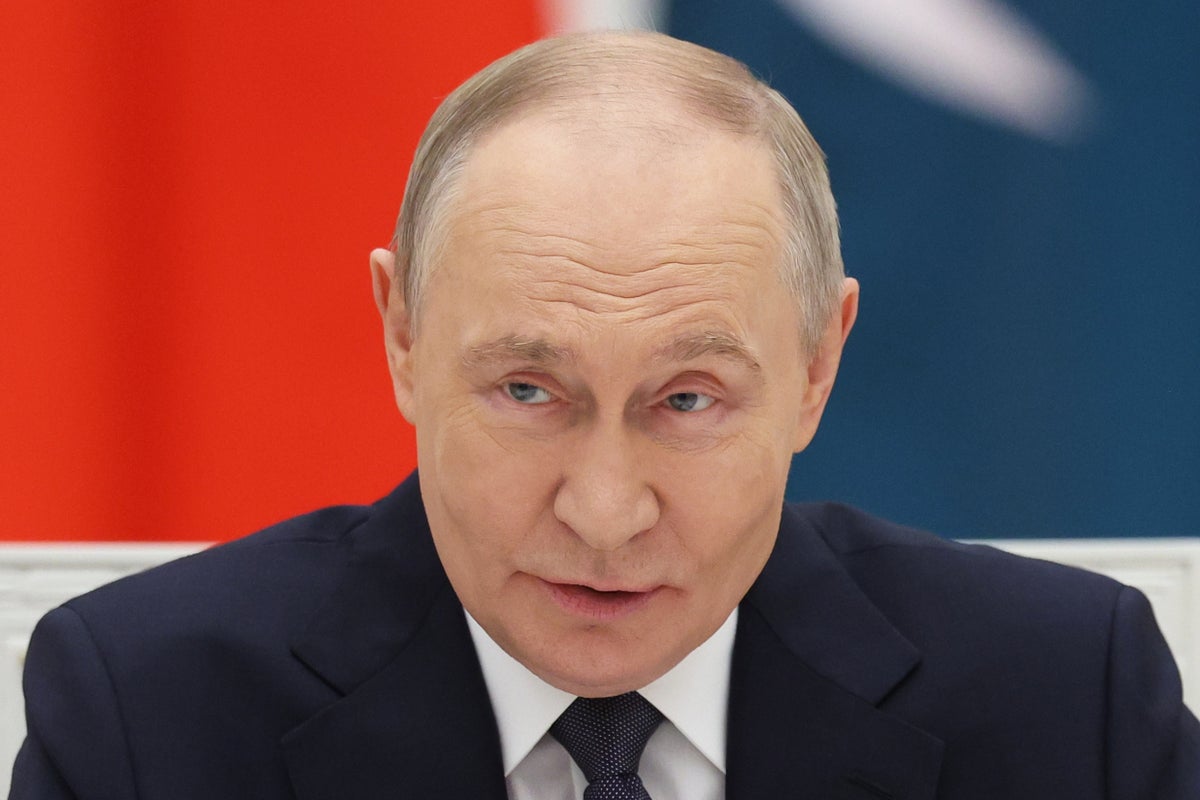From reproductive rights to climate change to Big Tech, The Independent is on the ground when the story is developing. Whether it’s investigating the financials of Elon Musk’s pro-Trump PAC or producing our latest documentary, ‘The A Word’, which shines a light on the American women fighting for reproductive rights, we know how important it is to parse out the facts from the messaging.
At such a critical moment in US history, we need reporters on the ground. Your donation allows us to keep sending journalists to speak to both sides of the story.
The Independent is trusted by Americans across the entire political spectrum. And unlike many other quality news outlets, we choose not to lock Americans out of our reporting and analysis with paywalls. We believe quality journalism should be available to everyone, paid for by those who can afford it.
Your support makes all the difference.
Read more
European allies have been shaken by provocations on Nato’s eastern frontier in recent months, accusing Russia of making brazen incursions onto foreign soil to test the bloc’s responses and undermine collective resolve.
Russia has long been accused of interfering in European affairs. But the issue was thrust back into focus in September, when nearly two dozen drones crossed over into Poland amid a large-scale Russian drone attack on Ukraine. Days later, jets violated Estonia’s airspace as Russia concluded major drills in Belarus.
Subsequent activity near the border has forced Europeans to close airports and borders, causing major disruption and exposing vulnerability. Businesses have responded with a wave of military and civilian innovations to safeguard the continent against the threats of modern warfare.
This week, Polish prime minister Donald Tusk said that a domestic railway line used to deliver aid to Ukraine had been damaged in an explosion he called an act of sabotage. His security services minister said everything seemed to point to Russia.
A Turkish tanker on the Danube River between Ukraine and Romania was then struck and set ablaze in a drone strike, officials said, as Russian drones attacked the region overnight. Romanian villages were evacuated, and Romanian troops scanning for drones were back from their positions, local media reported.
Analysts say that Russia is deliberately provoking NATO to see how it reacts, gathering information that might be useful when it decides the time is right to make a move against an alliance member.
Strike on the Romanian border
A drone struck a Turkish-flagged tanker in Ukraine’s southern Odesa region on 17 November, officials said, a day after Ukrainian President Volodymyr Zelenskyy signed a deal to import US liquefied natural gas through the area.
The MT Orinda was hit during the offloading of petroleum gas at Izmail port, prompting evacuations from the vessel. Residents in nearby villages in Romania, across the Danube, were forced from their homes. Nobody was injured.
Russia has used drones, missiles and artillery to repeatedly batter the Odesa region, especially its Black Sea ports, since its full-scale invasion of its neighbour nearly four years ago. There was no immediate Russia comment Monday.

open image in gallery
A cargo ship loaded with liquified petroleum gas engulfed by flames following Russian strikes (ISU Tulcea)
Polish train-track explosion
An explosion that damaged a Polish railway track on a route to Ukraine on 16 November was soon after blamed on Russia, as prime minister Donald Tusk vowed to catch those responsible.
Poland’s security services minister, Tomasz Siemoniak, said the attack on a section of the track near Mika village marked “a new stage of threatening the railway infrastructure”, before a spokesperson for the minister said that everything pointed to Russian intelligence commissioning sabotage.
While visiting the site Monday, the prime minister said the incident had taken place on a line that is vital for delivering aid to Ukraine.
Polish officials said they were sure an explosive device had been detonated on a section of track between Warsaw and Lublin and later discovered damage to overhead cables on the same line. Both were likely sabotage, Polish officials said.
Natia Seskuria, an associate fellow at the Royal United Services Institute (RUSI), told The Independent that Russia uses continued provocations against NATO members in Europe in order to “signal that Moscow retains the capacity to escalate the conflict beyond Ukraine’s borders”.
“In doing so, Putin aims to pressure the West into concessions by raising the perceived costs of continued confrontation,” she said.

open image in gallery
Initial investigations into the Polish railway track explosion pointed to Russia, Polish officials said (Copyright 2025 The Associated Press. All rights reserved)
Interceptions over the Baltic
Poland said on 30 October that its fighter jets had been scrambled to intercept a Russian reconnaissance plane over the Baltic Sea in the second such incident in a week.
Two days earlier, Polish jets intercepted a Russian aircraft flying in international airspace over the Baltic without a filed flight plan and with its transponder turned off.
Separately, Polish airports in Radom and Lublin reopened on Thursday after being forced shut by military aviation activity. Russian attacks on facilities in bordering Ukraine saw Polish and allied planes scrambled.
“These provocations also function as a stress test for NATO unity,” Seskuria explained. “By probing for weaknesses and divisions among European allies and forcing Europe to focus inwards to defend its own airspace and critical infrastructure, Russia hopes to undermine collective resolve and weaken transatlantic cohesion”.
This, she said, would help Russia improve its bargaining position ahead of any negotiations over the fate of Ukraine.
Weather balloons over Lithuania
Lithuania said on 29 October it would continue to close border crossings into Belarus until November in response to airspace disruptions by smugglers’ balloons.
The balloons, carrying cartons of cigarettes, forced airports in Lithuania to close several times in October. The EU said the balloons “occur in the context of a broader targeted hybrid campaign”.
Belarus’ president called the borders a “crazy scam” and accused the West of fighting a hybrid war against Belarus and Russia.

open image in gallery
A pair of Polish Air Force MiG-29 fighters intercepted a Russian aircraft flying over the Baltic Sea (DO RSZ)
Naval provocations off Denmark
Denmark accused Russian warships of repeatedly sailing on collision courses with Danish naval vessels and disrupting navigation systems in its straits connecting the Baltic to the North Sea at the start of October.
Such incidents risk unintended escalation, the defence intelligence ministry said on 3 October. The ministry said that Danish vessels and helicopters had been targeted by tracking radars and physically pointed at with weapons.
Drone sightings over Denmark
Denmark’s armed forces reported at the end of September that unidentified drones had been observed near military installations.
On 24 September, airports in Aalborg and Billund had to close briefly, reporting drone activity. On 22 September, Copenhagen airport also had to close. Denmark’s prime minister said that Russian involvement could not be ruled out. The Kremlin called the allegations “unfounded”.
In nearby Norway, Oslo airport was also closed over a possible drone sighting.

open image in gallery
A damaged drone lies after falling in the eastern Polish village of Czosnowka (Dariusz Stefaniuk)
Seskuria said it was likely, in her assessment, that Russia would continue pursuing provocations that “remain below the threshold of a conventional military response”, especially as diplomatic motions slow or stagger.
She said Moscow’s strategy relies on sustained pressure to test Western “resolve” without triggering a response. “Where this leads depends largely on NATO’s capacity to demonstrate unity and resilience,” she added.
Fighter jet incursions in Estonia
Three Russian military jets violated NATO member Estonia’s airspace for 12 minutes on 19 September in an “unprecedentedly brazen” incursion, according to the government.
Estonian foreign minister Margus Tsakhna said it was the fourth time that Russia has violated Estonian airspace in 2025.
The foreign ministry said that the incursion involved three Russian MIG-31 fighters and took place over the Gulf of Finland. The Russian charge d’affaires was summoned and given a protest note, a ministry statement said.
Military drills on NATO’s frontier
Russia and Belarus carried out joint military drills in Belarus between 12 and 16 September – an event with prior planning, but coinciding with raised tensions over recent drone incursions.
Analysts observed at the time that Russia had used the drills in 2021 to build up troop numbers before attacking Ukraine months later.
Poland, Lithuania and Latvia all ramped up security around the 2025 exercises, which included ‘planning the use of’ nuclear weapons.

open image in gallery
Russian tanks move during the “Zapad-2025” drills in September (AFP/Getty)
Drone incidents in eastern Europe
A Russian drone breached Romanian airspace on 13 September, prompting the military to scramble fighter jets.
The incident occurred during a Russian attack on Ukrainian infrastructure near the border, the defence ministry said.
Poland reported two days later that a drone had flown over the presidential palace in what it called a “provocation”. Two Belarusians were arrested.
